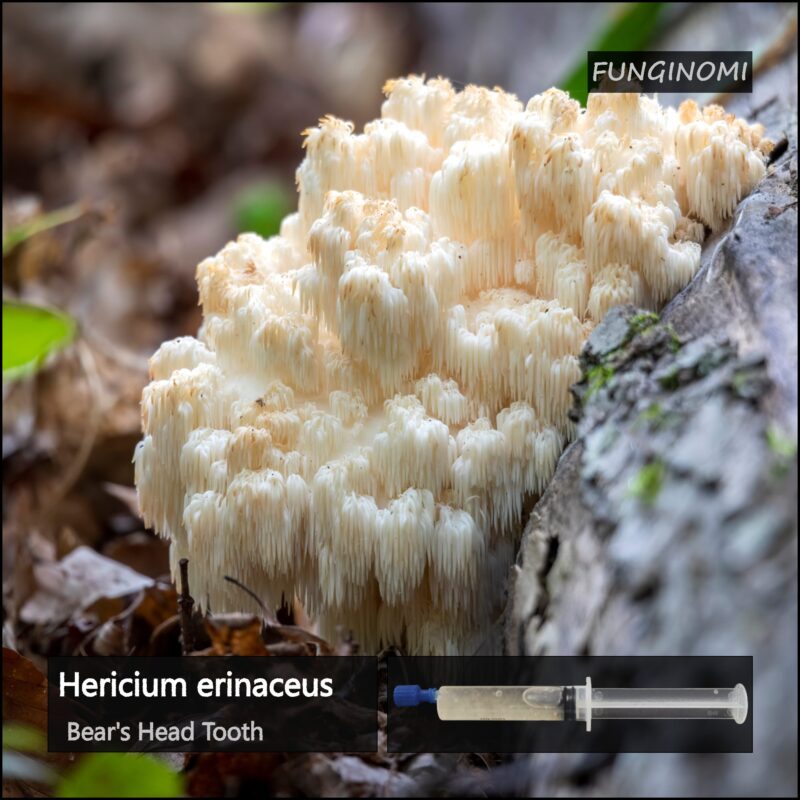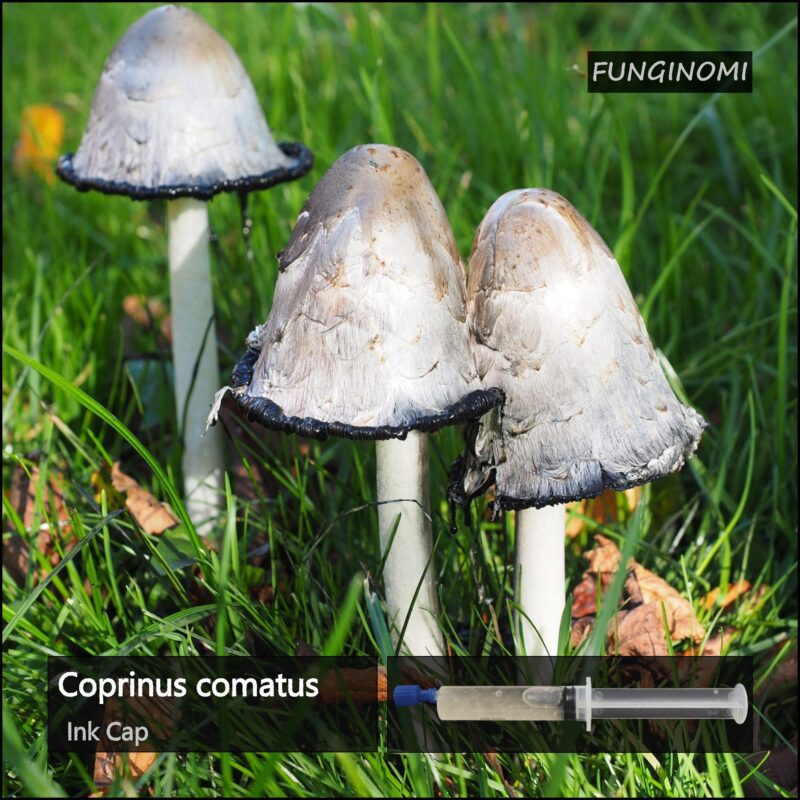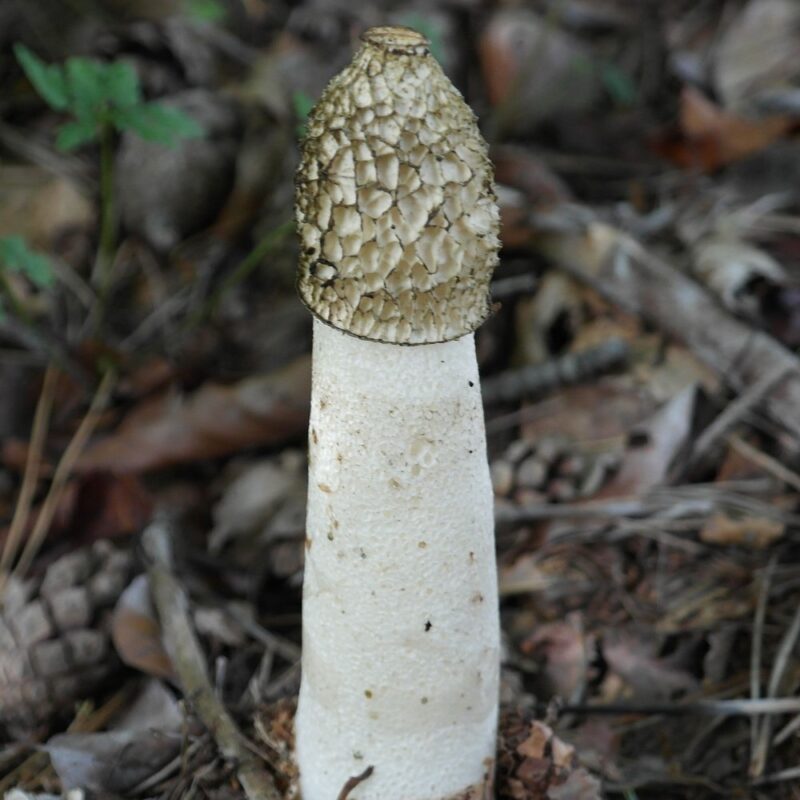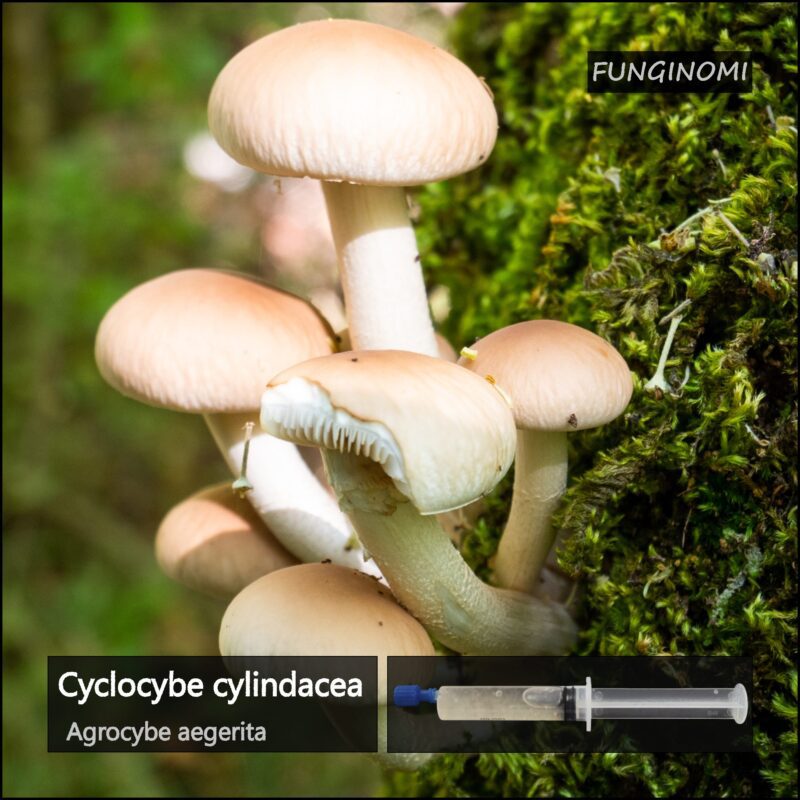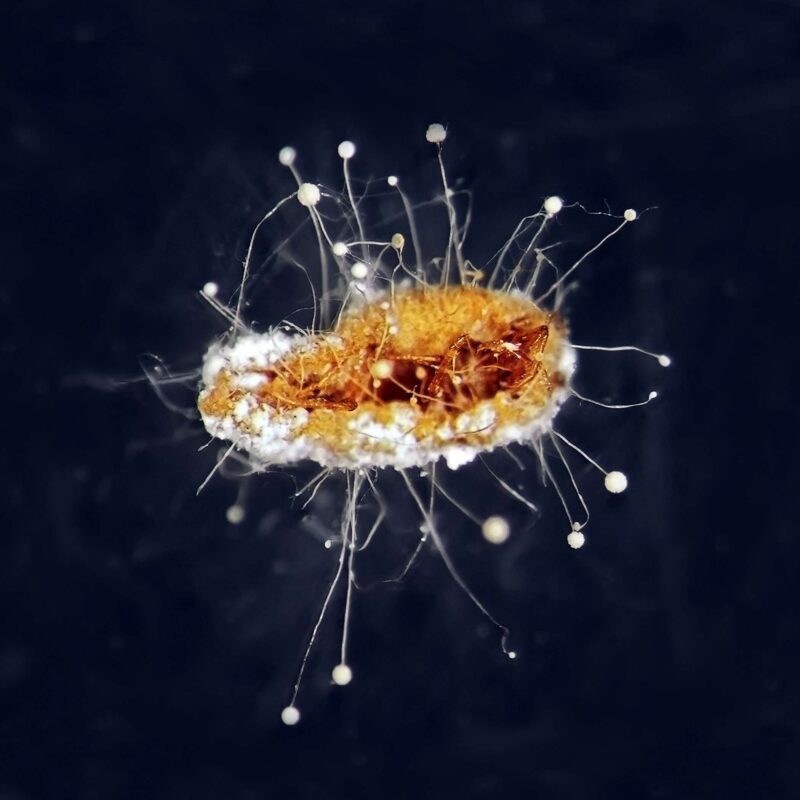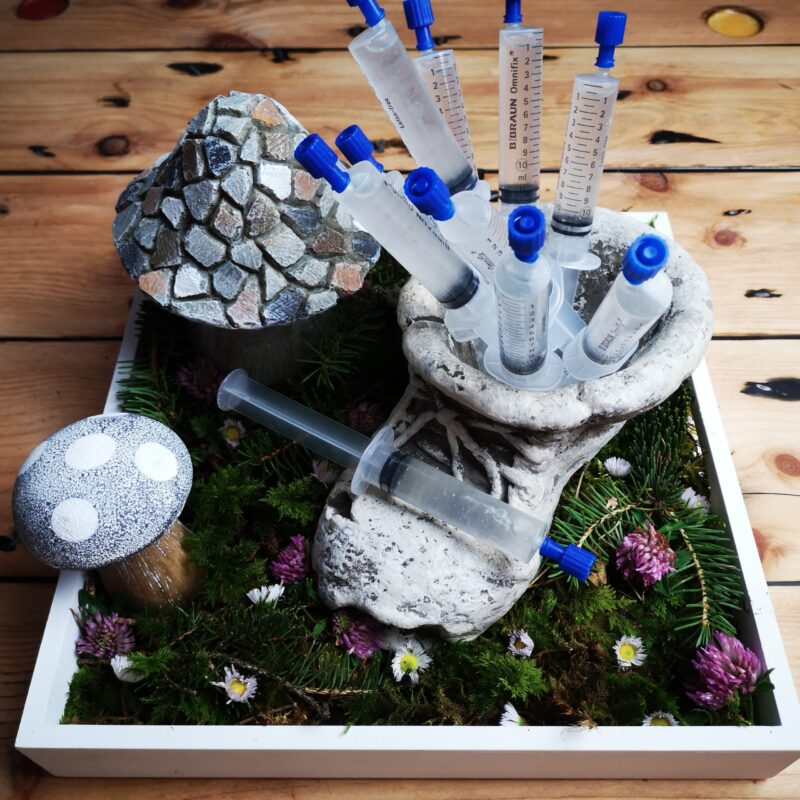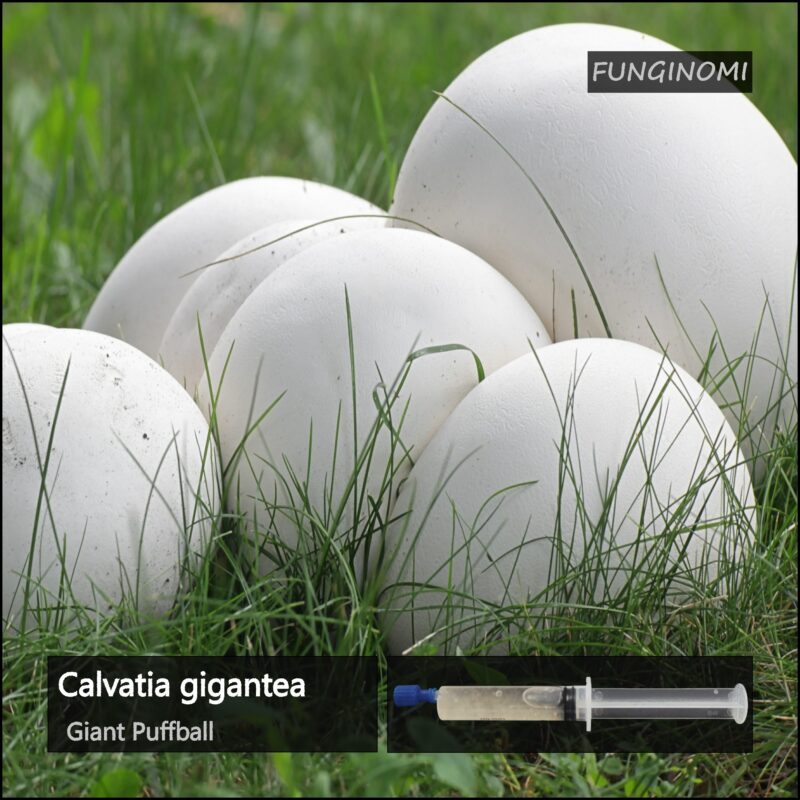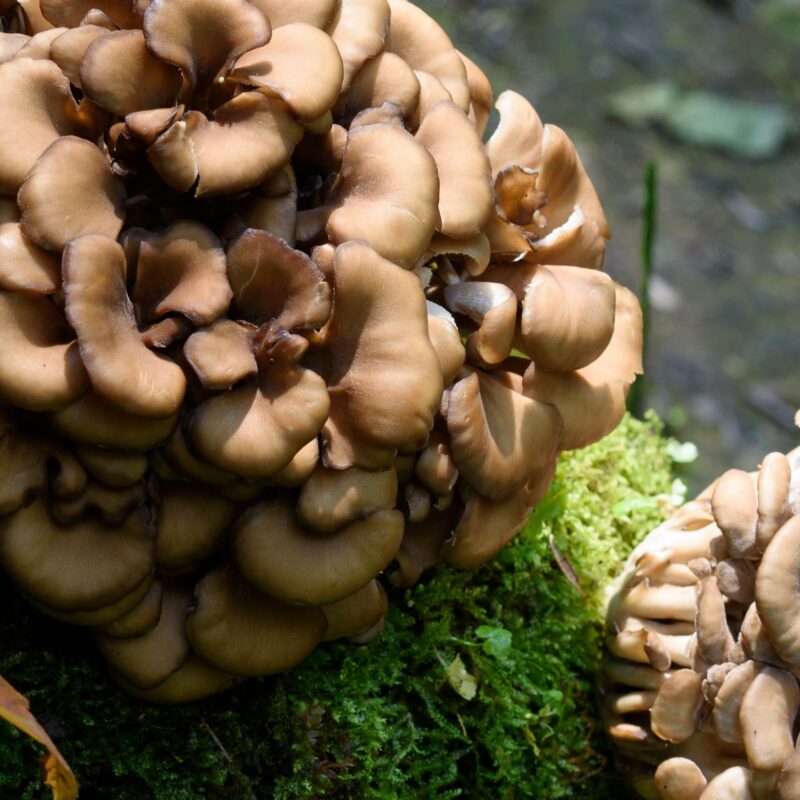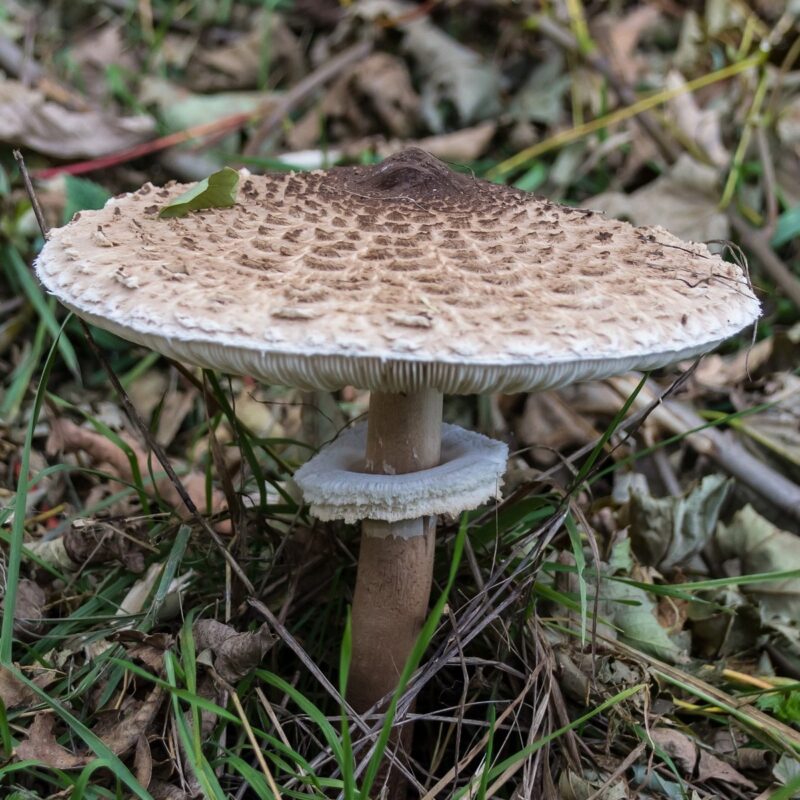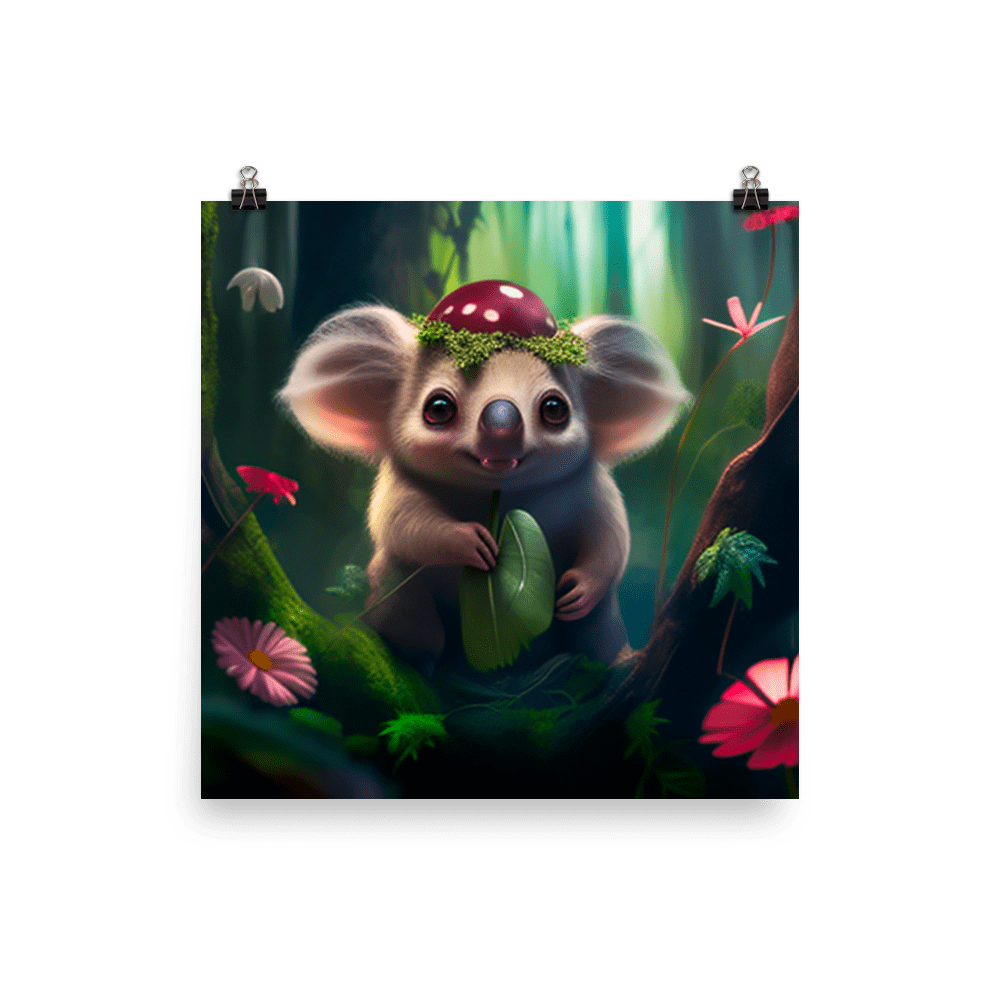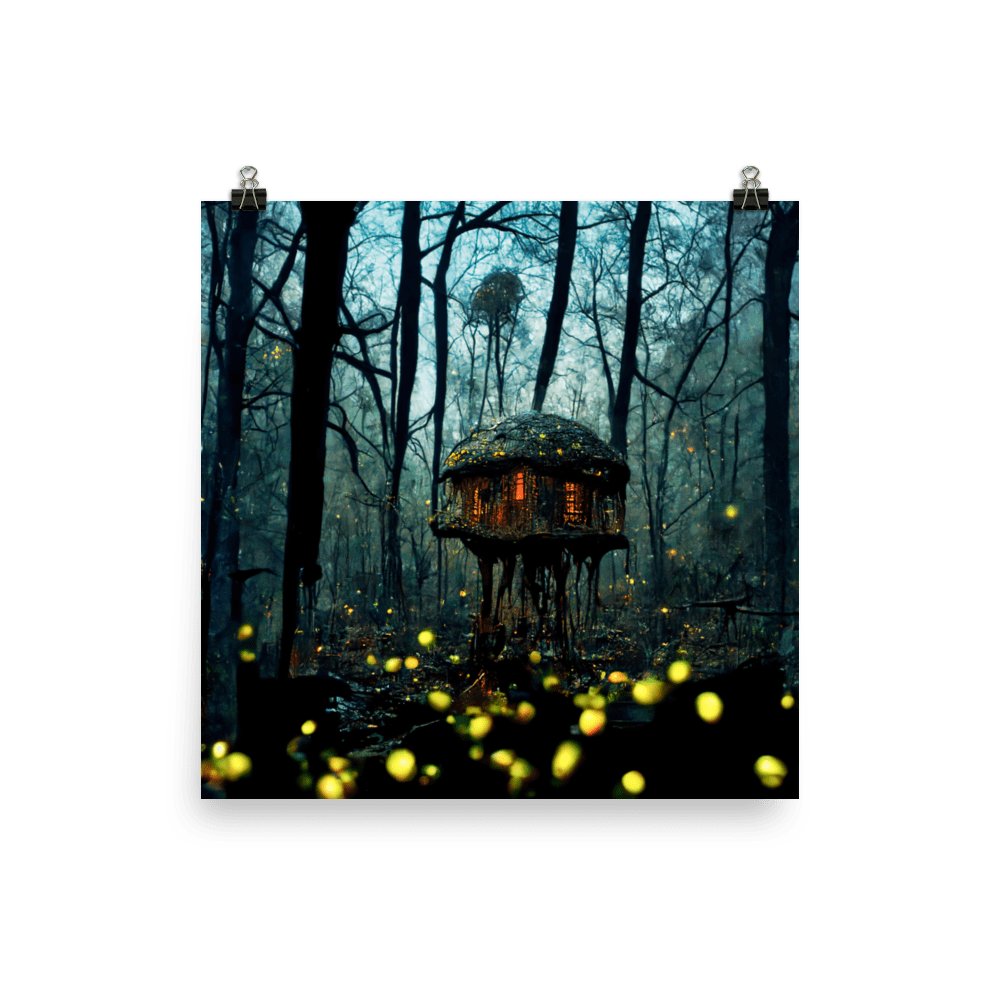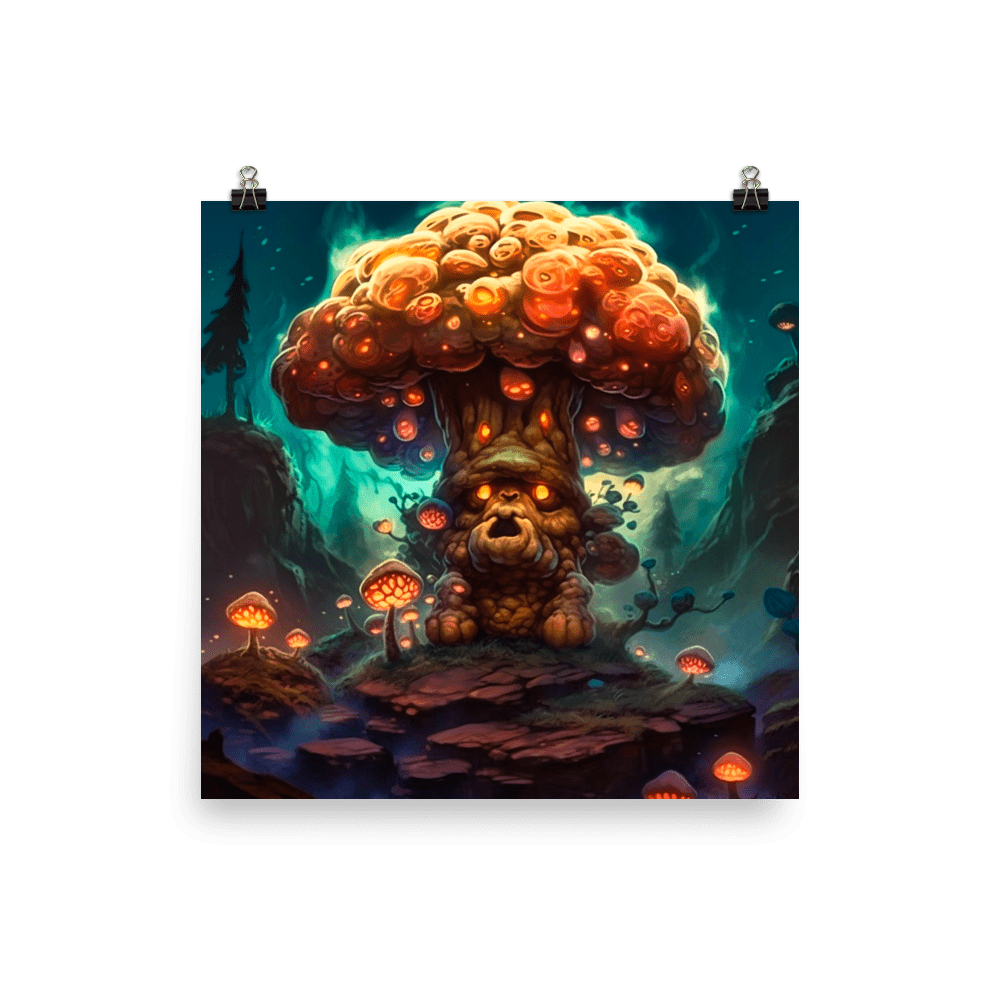A Comprehensive Guide to Mushroom Ecology and Conservation: Exploring the Fungi Kingdom’s Importance and Preservation
Introduction to Mushroom Ecology and Conservation

Introduction to Mushroom Ecology and Conservation
the intricate world of mushroom ecology and highlights the importance of conserving these remarkable fungi. Discover the hidden wonders of the fungi kingdom and learn how you can contribute to their preservation for the benefit of our planet.
Significance of Fungi in Ecosystems and their Role in Environmental Sustainability
-
Ecosystem Engineers: Fungi act as “nature’s recyclers,” breaking down organic matter and facilitating nutrient cycling. They play a vital role in decomposing dead plant material, returning essential nutrients back to the soil.
-
Soil Health: Fungi form symbiotic relationships with plants, forming mycorrhizal associations. These associations enhance nutrient uptake, improve soil structure, and increase plant resilience against diseases and environmental stressors.
-
Biodiversity Support: Fungi provide habitat and food sources for a diverse array of organisms, including insects, animals, and other fungi. They contribute to the overall biodiversity and stability of ecosystems.
-
Carbon Sequestration: As fungi decompose organic matter, they help sequester carbon in the soil, mitigating the impacts of climate change.
-
Medicinal and Industrial Applications: Many mushrooms possess medicinal properties and have been used in traditional medicine for centuries. Fungi also have industrial applications, such as in the production of enzymes, antibiotics, and biofuels.
By understanding and appreciating the significance of fungi in ecosystems, we can work towards their conservation and ensure a sustainable future for our planet.
Importance of Conservation Efforts to Protect Mushroom Species and their Habitats
-
Ecosystem Balance: Mushroom species are integral components of ecosystems, and their preservation is essential for maintaining ecological balance. By protecting mushroom habitats, we safeguard the intricate relationships they have with other organisms and maintain the overall health of our natural systems.
-
Biodiversity Preservation: Fungi represent a vast and diverse group of organisms, with countless species yet to be discovered. Conserving mushroom habitats helps preserve this incredible biodiversity, ensuring that future generations can benefit from their ecological, medicinal, and industrial potential.
-
Threatened and Endangered Species: Just like plants and animals, certain mushroom species face the risk of extinction. Conservation efforts are vital in identifying and protecting these threatened and endangered mushrooms, allowing them to thrive and contribute to ecosystem functioning.
-
Sustainable Harvesting Practices: For mushrooms that are collected for culinary or medicinal purposes, adopting sustainable harvesting practices is crucial. This ensures that mushroom populations are not overexploited, promoting their long-term survival and the sustainability of the ecosystems they inhabit.
-
Education and Awareness: Conservation efforts can raise public awareness about the importance of mushrooms and their habitats. Through education, we can foster a sense of appreciation and understanding, encouraging individuals to become stewards of mushroom conservation.
By prioritizing conservation efforts, we can protect mushroom species and their habitats, preserving their invaluable ecological contributions for future generations to enjoy and benefit from.
Understanding Mushroom Ecology
What Are Mushrooms?
Mushrooms are the fruiting bodies of fungi, belonging to the fungi kingdom. They are visible structures that emerge from the ground or other organic matter. While mushrooms are often associated with the classic umbrella-shaped caps and stalks, they come in a wide variety of shapes, sizes, and colors.
Fungi, including mushrooms, are distinct from plants and animals. They lack chlorophyll and cannot perform photosynthesis. Instead, mushrooms and other fungi obtain nutrients by decomposing organic matter or forming symbiotic relationships with plants. They play a crucial role in ecosystems by breaking down dead material and recycling nutrients, contributing to soil health and supporting the growth of plants.
Mushrooms have a long history of human use, both as food and for their medicinal properties. Culinary mushrooms are valued for their unique flavors and textures and are used in various cuisines worldwide. Some mushrooms also possess medicinal properties and have been used in traditional medicine for their potential health benefits.
It’s important to note that while many mushrooms are safe and edible, some species can be toxic or hallucinogenic. Therefore, proper identification is crucial before consuming wild mushrooms or using them for any purpose.
Overall, mushrooms are fascinating organisms with diverse shapes, ecological importance, and potential benefits for human health and well-being.
Mushrooms and their key characteristics
-
Fruiting Bodies: Mushrooms are the reproductive structures of fungi. They emerge above ground or from other substrates, such as decaying wood or soil, as distinct structures with caps and stalks.
-
Cap and Stalk: The cap is the top portion of the mushroom, often rounded or flat, with various shapes and sizes. It protects the spore-producing structures underneath. The stalk, also known as the stem, provides support for the cap.
-
Gills or Pores: The underside of the mushroom cap may have gills, thin and parallel structures that produce and hold spores. Alternatively, some mushrooms have pores, small openings that release spores. The arrangement of gills or pores is a crucial characteristic for identification.
-
Spore Production: Mushrooms produce spores, which are microscopic reproductive cells. These spores are released from the gills or pores and can be carried by air or other means to initiate the growth of new fungi elsewhere.
-
Mycelium: Mushrooms are just the visible part of the fungal organism. The mycelium, a network of thread-like structures, remains hidden within the substrate. It serves as the main body of the fungus, responsible for nutrient absorption and decomposition.
-
Ecological Role: Mushrooms are vital in ecosystems as decomposers and symbiotic partners. They break down organic matter, recycle nutrients, and form mycorrhizal associations with plants, facilitating nutrient uptake and enhancing plant health.
-
Biodiversity: The world of mushrooms encompasses an astonishing diversity of species, shapes, colors, and textures. Identifying and appreciating this diversity is essential for understanding their ecological importance and potential benefits.
It is important to note that while mushrooms offer culinary and medicinal opportunities, caution should be exercised when foraging for wild mushrooms, as some species can be toxic or hallucinogenic. Proper identification or sourcing from trusted suppliers is crucial to ensure safety.
The difference between mushrooms and other fungi
Fungi: Fungi constitute a diverse kingdom of organisms separate from plants and animals. They are eukaryotic, meaning their cells contain a nucleus. Fungi do not have chlorophyll and cannot perform photosynthesis like plants. Instead, they obtain nutrients through absorption. Fungi play essential roles in ecosystems as decomposers, pathogens, and symbiotic partners.
Mushrooms: Mushrooms are the fruiting bodies of certain fungi. They are the reproductive structures that emerge above ground or from other substrates. Mushrooms have distinct characteristics, including caps, stalks, and spore-producing structures such as gills or pores. They are visible and often recognizable due to their varied shapes, sizes, and colors.
Other Fungal Forms: While mushrooms are the most familiar type of fungi, there are many other forms of fungi that do not produce mushrooms. These include:
-
Mold: Mold is a type of fungi that often grows on damp surfaces, such as food, walls, or organic matter. It typically appears as fuzzy patches of growth and plays a crucial role in the decomposition process.
-
Yeast: Yeast is a single-celled fungus that is used in various applications, including baking, brewing, and fermentation. It is known for its ability to convert sugars into alcohol and carbon dioxide.
-
Lichens: Lichens are unique symbiotic associations between fungi and algae or cyanobacteria. They have a mutualistic relationship where the fungi provide a protective structure, while the photosynthetic partners produce food through photosynthesis.
-
Mycorrhizae: Mycorrhizae are symbiotic relationships between fungi and the roots of plants. The fungi assist in nutrient uptake from the soil and receive sugars from the plant in return. Mycorrhizal associations are essential for the growth and health of many plant species.
While mushrooms are a captivating and well-known group of fungi, it is important to recognize and appreciate the vast diversity of fungal forms and their vital contributions to ecosystems.
Highlight the diversity and abundance of mushroom species.
-
Vast Species Count: It is estimated that there are over 100,000 described species of mushrooms worldwide. However, this number is believed to represent only a fraction of the actual fungal diversity, with numerous species yet to be discovered and classified.
-
Various Shapes and Sizes: Mushrooms come in an astonishing array of shapes, sizes, and forms. From the classic umbrella-shaped caps with stalks to delicate cups, brackets, coral-like structures, and even bizarre and alien-looking formations, the diversity of mushroom shapes is captivating.
-
Colorful and Diverse Colors: Mushroom species exhibit an incredible range of colors. They can be found in hues of white, brown, yellow, red, orange, blue, green, and even vibrant and striking colors like purple, pink, and black. The diverse colors add to the visual allure of mushrooms.
-
Ecological Niches: Mushrooms occupy diverse ecological niches, growing in various habitats worldwide. They can be found in forests, grasslands, wetlands, deserts, and even on decaying matter like fallen logs or animal dung. Each habitat supports its own unique assemblage of mushroom species.
-
Edibility and Culinary Delights: A significant number of mushroom species are edible and have been consumed by humans for centuries. Culinary enthusiasts and foragers are fascinated by the wide range of flavors, textures, and culinary potential offered by edible mushrooms.
-
Medicinal Potential: Mushrooms have a long history of use in traditional medicine. Many species possess bioactive compounds that exhibit medicinal properties. Examples include reishi, lion’s mane, and shiitake mushrooms, which are known for their potential health benefits.
-
Endemic and Rare Species: Some mushroom species are endemic to specific regions or habitats, making them even more unique and valuable. These rare species often have specialized ecological requirements and play a vital role in their respective ecosystems.
The diversity and abundance of mushroom species are a testament to the intricate and fascinating world of fungi. Exploring and appreciating this diversity not only brings aesthetic pleasure but also contributes to our understanding of ecosystems and the potential benefits that mushrooms offer, both ecologically and for human well-being.
Mushroom Life Cycle
The life cycle of mushrooms encompasses several stages, including spore germination, mycelium growth, and fruiting body formation. Here’s an overview of the life cycle:
-
Spore Germination: The life cycle begins with the release of spores from mature mushrooms. These spores are microscopic and dispersed into the surrounding environment. When conditions are favorable, spores land on suitable substrates, such as soil, decaying matter, or plant material.
-
Mycelium Formation: Upon landing on a suitable substrate, spores germinate and give rise to thread-like structures called hyphae. Hyphae grow and branch out, intertwining to form a network known as the mycelium. The mycelium is the vegetative part of the fungus, responsible for nutrient absorption and growth.
-
Nutrient Absorption and Expansion: The mycelium continues to grow by absorbing nutrients from the substrate. It secretes enzymes that break down organic matter into simpler compounds that can be readily absorbed. As the mycelium expands, it forms a web-like network, extending further into the substrate.
-
Fruiting Body Initiation: Under suitable environmental conditions, such as the right temperature, humidity, and nutrient availability, the mycelium reaches a stage where it is ready to produce a fruiting body, which is the mushroom itself. Fruiting body initiation is triggered by various factors, including genetic programming and environmental cues.
-
Fruiting Body Development: Once initiated, the mycelium undergoes a transformation, and the fruiting body begins to form. The mycelium directs its energy and resources towards creating the structures that will eventually become the cap, stalk, gills or pores, and other characteristic features of the mushroom.
-
Spore Production and Dispersal: As the fruiting body develops, specialized structures, such as gills or pores, mature. These structures contain basidia or other spore-producing cells. Through a complex process, spores are produced and accumulate on the surface of the gills or within the pores.
-
Spore Release and Life Cycle Continuation: When the fruiting body reaches maturity, it releases spores into the environment. These spores are dispersed by air currents, water, or various other means. If conditions are favorable, spores that land on suitable substrates can germinate, initiating new mycelium growth and continuing the life cycle.
The life cycle of mushrooms is a fascinating and intricate process that involves different stages and relies on favorable environmental conditions for successful reproduction and propagation.
Mushroom growth and development are influenced by various factors, including environmental conditions, substrate composition, and genetic factors. Here are some key factors that play a role in mushroom growth:
-
Temperature: Mushrooms have specific temperature requirements for optimal growth. Different mushroom species have different temperature preferences, ranging from cool to warm. The temperature affects the speed of mycelium growth, fruiting body formation, and overall development. Deviations from the ideal temperature range can hinder or delay mushroom growth.
-
Moisture and Humidity: Adequate moisture and humidity are crucial for mushroom growth. Mushrooms require a moist environment to support mycelium growth, nutrient absorption, and fruiting body formation. Proper humidity levels help prevent drying out of the mycelium and facilitate spore production and release.
-
Light: Light requirements for mushroom growth vary depending on the species. Some mushrooms thrive in low light or complete darkness, while others benefit from exposure to indirect light. Light can influence the direction and shape of fruiting body development, as well as regulate the timing of mushroom formation.
-
Air Exchange and Ventilation: Proper air exchange and ventilation are important for maintaining a suitable environment for mushroom growth. Fresh air circulation helps remove excess carbon dioxide and replenish oxygen levels. It also aids in regulating humidity and preventing the buildup of contaminants that could hinder mushroom development.
-
Substrate Composition: The type and composition of the substrate on which mushrooms grow significantly impact their growth and development. Different mushroom species have specific substrate preferences. Common substrates include wood, straw, compost, or other organic materials. The substrate provides nutrients and serves as a support structure for the mycelium and fruiting bodies.
-
Nutrient Availability: Mushrooms require a sufficient supply of nutrients to support their growth. Organic matter present in the substrate serves as a source of nutrients. Proper nutrient balance, including carbon, nitrogen, and other essential elements, is essential for mycelium colonization, fruiting body formation, and spore production.
-
Genetic Factors: Each mushroom species has its own genetic makeup, which influences its growth characteristics, including growth rate, fruiting body size, shape, and other traits. Genetic factors can also impact the environmental conditions required for optimal growth and development.
It’s important to note that different mushroom species have specific requirements, and understanding these factors is crucial for successful cultivation or foraging of mushrooms. By carefully managing these factors, growers and enthusiasts can create favorable conditions to promote healthy and abundant mushroom growth.
Ecological Roles of Mushrooms
Mushrooms play vital ecological roles in various ecosystems. Here are some of their key ecological functions:
-
Decomposition and Nutrient Cycling: Mushrooms are prominent decomposers, breaking down dead organic matter, such as fallen leaves, wood, and animal remains. They release enzymes that break down complex organic compounds into simpler forms, facilitating nutrient recycling and returning essential elements to the soil. This process helps maintain ecosystem health and nutrient availability.
-
Mycorrhizal Associations: Many mushrooms form mutualistic associations with plants, known as mycorrhizae. In these symbiotic relationships, the mycelium of the mushroom colonizes the roots of plants. Mycorrhizae enhance nutrient uptake for both the mushroom and the host plant. The mycelium extends into the soil, increasing the surface area for nutrient absorption and aiding in water uptake. Mycorrhizal associations promote plant growth, enhance plant resilience to environmental stressors, and contribute to ecosystem stability.
-
Soil Formation and Structure: The mycelium of mushrooms, along with other soil fungi, contribute to the formation and maintenance of healthy soils. They create a network of hyphae that bind soil particles together, improving soil structure, aeration, and water retention. This enhances soil fertility, promotes root penetration, and facilitates the movement of nutrients through the soil.
-
Habitat and Microhabitat Creation: Mushrooms provide habitats and microhabitats for numerous organisms. The fruiting bodies offer shelter and food sources for insects, small mammals, and other animals. They create microenvironments that support a range of microorganisms, including bacteria and other fungi. Some mushrooms even host specialized species, such as mycophagous insects that depend on them for reproduction and survival.
-
Food Web Support: Mushrooms serve as an important food source for many organisms. Insects, slugs, snails, and larger animals feed on mushrooms, contributing to energy flow and nutrient cycling within food webs. Mushroom-eating animals play a role in spore dispersal, allowing mushrooms to colonize new areas and propagate.
-
Ecological Succession: Mushrooms are often associated with ecological succession, particularly in the decomposition of organic matter during early stages of succession. They prepare the ground for the establishment of other plant species by breaking down complex compounds and making nutrients available for subsequent vegetation.
-
Indicator Species: Some mushrooms are considered indicator species, providing valuable information about ecosystem health and environmental conditions. Certain species are sensitive to changes in air quality, soil contamination, or habitat disturbances. Monitoring their presence or absence can serve as an indicator of ecosystem integrity and aid in conservation efforts.
The ecological functions of mushrooms highlight their critical contributions to ecosystem dynamics, nutrient cycling, and overall ecological balance. Understanding and preserving these functions is essential for maintaining healthy and resilient ecosystems.
Mushrooms play significant roles in nutrient cycling, decomposition, and symbiotic relationships with other organisms. Here’s an explanation of their contributions in these areas:
-
Nutrient Cycling: Mushrooms, as decomposers, play a crucial role in nutrient cycling within ecosystems. They break down complex organic matter, such as dead leaves, wood, and animal remains, into simpler compounds. Through enzymatic processes, mushrooms release enzymes that break down complex molecules into nutrients like carbon, nitrogen, phosphorus, and others. These nutrients are then made available for uptake by plants, contributing to the overall fertility of the soil. In this way, mushrooms facilitate the recycling and redistribution of nutrients, promoting ecosystem health and productivity.
-
Decomposition: Mushrooms are key decomposers in ecosystems, specializing in breaking down lignocellulosic materials found in dead plant matter. They secrete enzymes that efficiently degrade these complex compounds, accelerating the decomposition process. By breaking down organic matter, mushrooms contribute to the release of nutrients, energy, and carbon dioxide back into the environment. This decomposition activity not only helps in recycling nutrients but also aids in the removal of organic waste, promoting the renewal and regeneration of ecosystems.
-
Symbiotic Relationships: Mushrooms form mutually beneficial associations with other organisms, known as symbiotic relationships. The two main types of symbiotic relationships involving mushrooms are mycorrhizal associations and endophytic associations.
-
Mycorrhizal Associations: Many mushrooms form mycorrhizal associations with the roots of plants. The mycelium of the mushroom colonizes the root system, forming a symbiotic relationship. In this association, the mushroom enhances the plant’s nutrient uptake capabilities, particularly for scarce nutrients like phosphorus. In return, the plant provides the mushroom with sugars and carbohydrates produced through photosynthesis. Mycorrhizal associations are widespread and vital for the growth and survival of many plant species, contributing to plant health, ecosystem stability, and nutrient cycling.
-
Endophytic Associations: Some mushrooms form endophytic associations with living plant tissues. They colonize the inner tissues of leaves, stems, or roots without causing harm to the host plant. Endophytic mushrooms can enhance the host plant’s resistance to pathogens, pests, and environmental stressors. They can also aid in nutrient uptake and improve overall plant health.
These symbiotic relationships showcase the mutual benefits that mushrooms offer to other organisms, promoting plant growth, nutrient acquisition, and ecosystem functioning.
Mushrooms’ roles in nutrient cycling, decomposition, and symbiotic relationships demonstrate their significance in maintaining ecosystem health, nutrient availability, and overall ecological balance. They are vital contributors to the dynamic processes that sustain ecosystems and support the functioning of diverse organisms within them.
Mycorrhizal associations, the symbiotic relationships between fungi (such as mushrooms) and plant roots, play a significant role in plant health and ecosystem stability. Here’s an overview of their significance:
-
Nutrient Acquisition: Mycorrhizal associations enhance the plant’s ability to acquire nutrients, particularly those that may be limited in the soil, such as phosphorus, nitrogen, and micronutrients. The fungal mycelium extends into the soil, effectively increasing the root surface area for nutrient absorption. The fungi release enzymes that help break down organic matter, making nutrients more accessible to the plant. In return, the plant provides the fungus with carbohydrates produced through photosynthesis.
-
Increased Water Uptake: Mycorrhizal associations improve a plant’s ability to absorb water from the soil. The extensive network of fungal hyphae acts as an extension of the plant’s root system, increasing the surface area for water uptake. This is particularly beneficial in arid or nutrient-poor environments where water availability is limited.
-
Enhanced Plant Growth and Vigor: Mycorrhizal associations promote plant growth and vigor. By improving nutrient acquisition and water uptake, plants with mycorrhizal associations typically exhibit increased root and shoot development, leading to healthier and more robust plants. They also contribute to improved stress tolerance, enabling plants to better withstand environmental challenges such as drought, disease, and nutrient deficiencies.
-
Ecosystem Stability: Mycorrhizal associations contribute to overall ecosystem stability. They facilitate nutrient cycling and the transfer of carbon between plants and fungi. This cycling helps maintain nutrient availability and balance within ecosystems, supporting the growth and survival of various plant species. Additionally, mycorrhizal networks connect individual plants, enabling the exchange of nutrients, carbon, and even signaling molecules between plants. This interconnectedness fosters communication and cooperation within plant communities, enhancing ecosystem resilience.
-
Soil Health and Fertility: Mycorrhizal associations improve soil health and fertility. The fungal hyphae contribute to the development of soil aggregates, improving soil structure, porosity, and water-holding capacity. This enhances nutrient availability, reduces soil erosion, and promotes the growth of beneficial microorganisms. Mycorrhizal fungi also secrete compounds that suppress pathogenic microorganisms, thereby protecting plant roots from diseases.
-
Ecological Succession: Mycorrhizal associations are integral to ecological succession, the process of gradual change and development of ecosystems over time. They play a vital role in the establishment and survival of pioneer plant species on barren or disturbed soils. Mycorrhizal fungi facilitate nutrient acquisition in nutrient-poor environments, aiding in the colonization of these areas by early successional species. As the ecosystem matures, mycorrhizal associations continue to support the growth and persistence of plant communities.
In summary, mycorrhizal associations are of immense significance in promoting plant health, nutrient acquisition, and ecosystem stability. They enhance plant growth, improve nutrient and water uptake, and contribute to the resilience and functioning of ecosystems. Understanding and fostering these associations are essential for sustainable land management, ecological restoration, and maintaining healthy, diverse ecosystems.
Importance of Mushroom Conservation
Threats to Mushroom Populations
Mushroom species and their habitats face several significant threats that can negatively impact their populations and overall ecosystem health. Here are some major threats:
-
Habitat Loss and Fragmentation: The destruction and fragmentation of natural habitats pose a significant threat to mushroom species. Urbanization, deforestation, agricultural expansion, and land-use changes result in the loss and degradation of forests, woodlands, and other natural habitats that mushrooms depend on. The removal of host trees, which are crucial for certain mushroom species, can disrupt their life cycles and lead to population declines.
-
Climate Change: Climate change poses a range of challenges for mushroom species and their habitats. Alterations in temperature, precipitation patterns, and extreme weather events can impact the timing of fruiting, mycelium growth, and overall mushroom population dynamics. Changes in temperature and humidity can also disrupt the delicate balance required for successful mushroom reproduction and survival.
-
Pollution and Contamination: Pollution, including air pollution, water pollution, and soil contamination, can negatively affect mushroom species and their habitats. Toxic substances such as heavy metals, pesticides, herbicides, and chemical pollutants can accumulate in mushrooms, impairing their growth and reproduction. Contaminated soils or water bodies can lead to the decline of sensitive mushroom species and disrupt the ecological interactions they participate in.
-
Overharvesting and Unsustainable Collection: Unregulated and unsustainable harvesting of mushrooms can deplete populations and disrupt ecosystems. Some mushroom species have slow growth rates and low reproductive capacities, making them particularly vulnerable to overharvesting. Collecting mushrooms without considering sustainable practices, such as leaving some behind for spore dispersal and future growth, can have long-term detrimental effects on their populations.
-
Invasive Species: Invasive species, both plant and fungal, can pose a threat to native mushroom species and their habitats. Invasive fungi can outcompete or parasitize native mushroom species, leading to declines in their populations. Invasive plants can alter habitat conditions, reducing suitable environments for native mushrooms and disrupting the associated ecological interactions.
-
Lack of Awareness and Conservation Efforts: A lack of awareness and understanding about the ecological importance of mushrooms and their conservation needs can contribute to their decline. Insufficient conservation efforts, limited research, and inadequate protection measures for mushroom habitats further exacerbate the threats they face.
It’s important to address these threats through conservation initiatives, habitat protection, sustainable harvesting practices, and raising awareness about the ecological importance of mushrooms. Implementing measures to mitigate climate change, reduce pollution, and promote habitat restoration can help safeguard mushroom species and their habitats for future generations.
Deforestation, pollution, climate change, and unsustainable harvesting practices have significant impacts on mushroom species and their habitats. Here’s a closer look at each of these factors:
-
Deforestation: Deforestation involves the clearance and removal of forests, which are important habitats for many mushroom species. The loss of forests disrupts the complex ecosystem interactions that mushrooms depend on, such as mycorrhizal associations with trees. It reduces the availability of suitable substrates and host trees necessary for the growth and development of various mushroom species. Deforestation also leads to habitat fragmentation, isolating populations and limiting their genetic diversity, which can increase their vulnerability to other threats.
-
Pollution: Pollution from various sources, including air, water, and soil pollution, has detrimental effects on mushroom species and their habitats. Air pollution, such as high levels of sulfur dioxide or nitrogen oxides, can directly harm mushrooms by damaging their tissues, impairing their growth, and reducing their reproductive capacity. Water pollution, caused by industrial runoff, agricultural chemicals, or untreated sewage, can contaminate water bodies, affecting mushroom habitats and leading to declines in their populations. Soil contamination with toxic substances like heavy metals can accumulate in mushrooms, making them unfit for consumption and disrupting their ecological roles.
-
Climate Change: Climate change has profound implications for mushroom species and their habitats. Rising temperatures, altered precipitation patterns, and extreme weather events disrupt the delicate balance required for mushroom growth, fruiting, and overall population dynamics. Changes in temperature and humidity can affect the timing and occurrence of fruiting bodies, leading to mismatches with other organisms that depend on mushrooms for food or spore dispersal. Climate change can also shift the geographic ranges of mushroom species, impacting their distribution and potentially leading to local extinctions if suitable habitats become unavailable.
-
Unsustainable Harvesting Practices: Unsustainable harvesting practices, such as overharvesting or destructive collection methods, have severe consequences for mushroom species. Overharvesting depletes populations and disrupts the natural reproductive cycle of mushrooms, impeding their ability to reproduce and regenerate. Some mushroom species have slow growth rates and low reproductive capacities, making them particularly vulnerable. Destructive collection methods, such as uprooting entire mushrooms or damaging their surrounding habitats, can have long-lasting impacts, preventing future growth and degrading ecosystems.
These factors interact and compound each other, further exacerbating the impacts on mushroom species and their habitats. The loss of mushroom species can have cascading effects on ecosystems, including disruptions to nutrient cycling, mycorrhizal associations, and overall ecosystem functioning. Preserving forests, reducing pollution, mitigating climate change, and promoting sustainable harvesting practices are essential for the conservation and long-term survival of mushroom species and the ecosystems they support.
Benefits of Mushroom Conservation
Preserving mushroom biodiversity is of immense value, encompassing ecological, economic, and medicinal benefits. Here are some key aspects of their importance:
Ecological Value:
-
Ecosystem Health: Mushroom biodiversity is crucial for maintaining ecosystem health and functioning. Mushrooms contribute to nutrient cycling, decomposition, and symbiotic relationships, playing integral roles in maintaining soil fertility, promoting plant growth, and supporting diverse organisms within ecosystems.
-
Biodiversity Conservation: Mushroom species represent a significant component of overall biodiversity. Conserving mushroom biodiversity helps protect the integrity and resilience of ecosystems, ensuring the presence of various ecological interactions and maintaining the balance of populations within ecosystems.
-
Habitat Restoration: Many mushroom species play important roles in habitat restoration efforts. They help in breaking down organic matter, promoting soil development, and facilitating the establishment of plant communities. Restoring mushroom diversity is vital for the successful rehabilitation of degraded habitats and the reestablishment of healthy ecosystems.
Economic Value:
-
Edible and Culinary Uses: Numerous mushroom species have culinary value and are consumed worldwide. Preserving mushroom biodiversity ensures a diverse array of edible species, supporting the culinary industry, local food systems, and traditional practices related to mushroom gathering and cuisine.
-
Non-timber Forest Products: Mushrooms contribute to non-timber forest product industries, providing economic opportunities for local communities. Sustainable harvesting and marketing of wild mushrooms can generate income, promote rural livelihoods, and foster sustainable forest management practices.
-
Agriculture and Horticulture: Certain mushroom species, such as oyster mushrooms and shiitake mushrooms, are cultivated for commercial purposes. Preserving mushroom biodiversity allows for the continued exploration and development of new mushroom cultivars with desirable traits, supporting the growth of the agricultural and horticultural sectors.
Medicinal Value:
-
Traditional Medicine: Mushrooms have long been used in traditional medicine systems across various cultures. Many mushroom species possess medicinal properties and are valued for their potential therapeutic applications, including immune modulation, anti-inflammatory effects, and anti-cancer properties. Preserving mushroom biodiversity ensures the availability of diverse species with potential medicinal benefits.
-
Pharmaceutical Industry: Mushrooms serve as a rich source of bioactive compounds that are of interest to the pharmaceutical industry. Ongoing research on mushroom metabolites has revealed promising compounds with potential applications in drug development, leading to the production of novel pharmaceuticals.
-
Health and Wellness: Mushrooms are increasingly recognized for their nutritional value and potential health benefits. They are rich in vitamins, minerals, and dietary fibers, and can contribute to a balanced and nutritious diet. Preserving mushroom biodiversity allows for continued exploration of their nutritional and wellness benefits.
Preserving mushroom biodiversity is crucial for ecological stability, sustainable economic development, and potential advancements in medicine and human health. Conservation efforts focused on protecting mushroom species and their habitats contribute to the overall well-being of ecosystems, local communities, and society as a whole.
Mushrooms possess diverse applications in agriculture, medicine, and bioremediation due to their unique properties and capabilities. Here’s an overview of their potential applications in these fields:
Agriculture:
-
Biocontrol Agents: Certain mushroom species, such as Trichoderma and Tricholoma, have biocontrol properties. They can help control plant pathogens and pests, reducing the reliance on chemical pesticides and promoting sustainable agricultural practices.
-
Mycorrhizal Inoculants: Mycorrhizal fungi, including species like Rhizophagus irregularis and Pisolithus tinctorius, can be used as inoculants to improve plant growth and nutrient uptake. These beneficial fungi form symbiotic associations with plant roots, enhancing nutrient absorption and promoting plant health in agriculture and horticulture.
-
Organic Fertilizers: Some mushroom species, such as the common button mushroom (Agaricus bisporus), are utilized in the production of organic fertilizers. Mushroom compost, rich in organic matter and nutrients, can be incorporated into soil to improve its fertility and support sustainable crop production.
Medicine:
-
Medicinal Mushroom Extracts: Many mushroom species contain bioactive compounds with potential therapeutic properties. For example, species like Ganoderma lucidum (reishi), Lentinula edodes (shiitake), and Cordyceps militaris have been studied for their immunomodulatory, anti-inflammatory, and anti-cancer effects. Extracts from these mushrooms are used in traditional medicine and have gained attention in modern medical research.
-
Drug Development: Mushrooms serve as a source of compounds that can be utilized in pharmaceutical drug development. Bioactive compounds derived from mushrooms, such as polysaccharides, terpenoids, and phenolic compounds, are investigated for their potential in developing new drugs and therapeutic agents.
Bioremediation:
-
Mycoremediation: Certain mushroom species have the ability to degrade or sequester pollutants, making them valuable in bioremediation efforts. For instance, white-rot fungi like Pleurotus ostreatus (oyster mushroom) and Phanerochaete chrysosporium are adept at breaking down complex organic pollutants, including petroleum hydrocarbons and industrial chemicals, through their enzymatic activities.
-
Heavy Metal Accumulation: Some mushroom species possess the ability to accumulate and tolerate heavy metals. They can be employed in the process of mycofiltration or mycoremediation to remove heavy metals from contaminated soils and water bodies, helping in the cleanup of polluted environments.
-
Environmental Restoration: Mushrooms, through their role in decomposition and nutrient cycling, contribute to the restoration of degraded ecosystems. They aid in breaking down organic matter and facilitating the regeneration of soil, thereby promoting the recovery of ecosystems impacted by pollution or other disturbances.
These are just a few examples of the potential applications of mushrooms in agriculture, medicine, and bioremediation. Ongoing research and exploration of mushroom diversity continue to uncover new possibilities for their utilization in various fields, showcasing their versatility and importance in addressing environmental, agricultural, and health challenges.
Strategies for Mushroom Conservation
Habitat Protection and Restoration
Preserving natural habitats that support mushroom populations is of utmost importance due to the following reasons:
-
Biodiversity Conservation: Natural habitats are home to a wide range of mushroom species, each with its unique ecological role and contribution to biodiversity. Conserving these habitats ensures the preservation of diverse mushroom populations, maintaining the intricate web of ecological interactions they participate in. Protecting mushroom diversity is vital for sustaining healthy ecosystems and safeguarding the overall biodiversity of the planet.
-
Ecosystem Functioning: Mushrooms play critical roles in ecosystem functioning and stability. They participate in nutrient cycling, decomposition, and symbiotic relationships with other organisms, influencing the availability of nutrients, soil fertility, and plant health. Preserving their natural habitats allows for the continuation of these important ecological processes, maintaining the resilience and functionality of ecosystems.
-
Mycorrhizal Associations: Many mushroom species form symbiotic relationships with plant roots, known as mycorrhizal associations. These associations enhance plant nutrient uptake, improve soil structure, and increase plant resistance to stress. Preserving natural habitats ensures the availability of suitable host plants and mycorrhizal fungi, promoting the health and vitality of both plant and fungal populations.
-
Genetic Diversity: Natural habitats provide a diverse range of environmental conditions and microhabitats, leading to the development of genetic diversity within mushroom populations. Genetic diversity is essential for the adaptation and resilience of species in the face of environmental changes and disturbances. Preserving natural habitats allows mushroom populations to maintain their genetic diversity, increasing their chances of survival and adaptation to future challenges.
-
Discovery of Novel Species: Natural habitats serve as hotspots for the discovery of new mushroom species. Many mushroom species are yet to be identified, and natural habitats hold unexplored biodiversity. Preserving these habitats provides opportunities for scientific research and discovery, contributing to our understanding of fungal diversity and the potential benefits they offer.
-
Educational and Recreational Value: Natural habitats that support mushroom populations offer educational and recreational opportunities. They provide spaces for nature enthusiasts, researchers, and mushroom enthusiasts to observe, study, and appreciate the fascinating world of fungi. Preserving these habitats ensures that future generations can continue to explore and learn from the natural wonders of mushrooms.
In summary, preserving natural habitats that support mushroom populations is crucial for biodiversity conservation, ecosystem functioning, mycorrhizal associations, genetic diversity, scientific discovery, and educational value. By protecting these habitats, we contribute to the sustainability of ecosystems, the preservation of mushroom diversity, and the well-being of our planet.
Creating protected areas and implementing habitat restoration initiatives are essential steps in preserving mushroom populations and their natural habitats. Here’s guidance on these processes:
Creating Protected Areas:
-
Identify Key Habitats: Conduct thorough assessments to identify key habitats that are rich in mushroom diversity and support critical ecological processes. Consider factors such as species richness, presence of rare or endemic species, and ecological significance.
-
Establish Legal Protection: Work with relevant authorities and stakeholders to establish legal protections for identified habitats. This may involve designating protected areas, nature reserves, or conservation zones through legislation or other regulatory mechanisms.
-
Collaborate with Local Communities: Engage local communities who have a stake in the identified habitats. Collaborative efforts and community involvement are crucial for successful protected area management. Seek their input, address their concerns, and involve them in decision-making processes.
-
Develop Management Plans: Create comprehensive management plans for protected areas, including specific guidelines for preserving mushroom populations and their habitats. Consider factors like habitat conservation, controlled access, sustainable use practices, and monitoring protocols. Ensure that the management plans are adaptable and based on scientific knowledge.
-
Enforce Regulations: Implement effective enforcement mechanisms to prevent illegal activities, such as poaching, logging, or habitat destruction, within protected areas. Strengthen law enforcement capacities and foster collaboration with relevant authorities to ensure compliance with regulations.
Implementing Habitat Restoration Initiatives:
-
Assess Habitat Degradation: Conduct thorough assessments of degraded habitats to understand the causes and extent of degradation. Identify specific factors, such as deforestation, pollution, or invasive species, that have contributed to the degradation.
-
Develop Restoration Goals: Define clear restoration goals and objectives for each degraded habitat. Consider the specific needs of mushroom populations and their ecological requirements while setting these goals. Aim to restore ecosystem functionality and the natural processes that support mushroom diversity.
-
Ecological Rehabilitation: Implement measures to restore key ecological components of the habitat. This may involve reforestation, habitat connectivity enhancement, soil remediation, and removal of invasive species. Prioritize the restoration of mycorrhizal associations by reintroducing suitable host plants.
-
Active Intervention: In some cases, active intervention may be required to aid mushroom recovery. This could involve reintroducing mushroom species through controlled inoculation, promoting the growth of specific host plants, or implementing habitat modifications to create suitable microenvironments.
-
Long-Term Monitoring: Establish a monitoring program to assess the progress and effectiveness of habitat restoration initiatives. Regularly evaluate the recovery of mushroom populations, changes in vegetation composition, and the overall health of the restored habitat. Adjust restoration strategies based on monitoring results to ensure long-term success.
-
Stakeholder Engagement: Engage local communities, scientific experts, and relevant stakeholders in habitat restoration initiatives. Raise awareness about the importance of mushroom conservation and the benefits of habitat restoration. Foster collaboration and encourage participation in restoration activities.
Both protected areas and habitat restoration initiatives should be based on scientific research, involve interdisciplinary collaboration, and adapt to changing environmental conditions. Continuous monitoring, evaluation, and adaptive management are key to ensuring the long-term success of these conservation efforts.
Sustainable Harvesting Practices
Sustainable mushroom harvesting involves practices that ensure the long-term viability of mushroom populations and their habitats. The principles of sustainable mushroom harvesting include:
-
Respect for Ecosystems: Recognize that mushrooms are an integral part of ecosystems, playing important roles in nutrient cycling, decomposition, and symbiotic relationships. Harvesting should be conducted in a manner that minimizes disturbance to the surrounding environment and preserves the overall health and functionality of the ecosystem.
-
Selective Harvesting: Practice selective harvesting by only collecting mature mushrooms while leaving younger or immature ones behind. This allows mushrooms to complete their life cycle, disperse spores, and contribute to the natural reproduction of the species. Selective harvesting helps maintain a healthy age structure within mushroom populations and ensures their long-term sustainability.
-
Harvest Limits and Regulations: Follow local regulations and guidelines regarding harvest limits, protected species, and designated harvest areas. These regulations are in place to prevent overharvesting, protect vulnerable species, and maintain ecological balance. Stay informed about any permits or licenses required for mushroom harvesting in specific areas.
-
Sustainable Quantities: Harvest mushrooms in quantities that are sustainable and proportionate to the availability of the species in the area. Avoid excessive harvesting that could negatively impact local populations or disrupt the ecological dynamics of the habitat. Consider the size of the mushroom population, the rate of their natural regeneration, and the overall health of the ecosystem.
-
Habitat Preservation: Prioritize the preservation of mushroom habitats. Avoid damaging or destroying habitat features such as fallen logs, decaying organic matter, or mycorrhizal associations with trees and plants. These habitats provide the necessary conditions for mushroom growth and play a crucial role in their life cycles. Preserve the natural substrate, vegetation, and soil integrity associated with mushroom habitats.
-
Education and Awareness: Promote education and awareness about sustainable mushroom harvesting practices. Encourage fellow foragers and mushroom enthusiasts to adopt responsible approaches to ensure the long-term conservation of mushroom populations. Share knowledge about identification, habitat preservation, and sustainable harvesting techniques to minimize negative impacts.
-
Collaboration with Experts: Collaborate with local mycological experts, conservation organizations, and land managers to gain insights into sustainable mushroom harvesting practices. Seek guidance on species identification, conservation priorities, and areas where harvesting can be conducted in a sustainable manner. Work together to establish guidelines and best practices for sustainable mushroom harvesting in your region.
By following these principles of sustainable mushroom harvesting, we can enjoy the benefits of mushroom foraging while ensuring the preservation and sustainability of these valuable fungal resources. Responsible harvesting practices contribute to the conservation of mushroom biodiversity, the health of ecosystems, and the enjoyment of future generations.
When engaging in mushroom foraging and harvesting, it’s important to follow responsible practices to minimize negative impacts on mushroom populations and their habitats. Here are some guidelines to consider:
-
Obtain Proper Knowledge: Before embarking on a foraging trip, educate yourself about local regulations, permits, and any protected species or habitats in the area. Familiarize yourself with the different mushroom species, their habitats, and identification features. Consider joining local mycological societies or attending workshops to enhance your knowledge.
-
Leave No Trace: Practice Leave No Trace principles while foraging. Minimize your impact by staying on designated trails or paths and avoiding trampling vegetation or damaging tree roots. Refrain from removing or damaging other plant species, as they play a crucial role in supporting mushroom populations and ecosystem balance.
-
Responsible Harvesting: Harvest mushrooms in a responsible and sustainable manner. Only collect mature specimens, leaving behind younger or immature ones to allow for spore dispersal and future reproduction. Avoid over-harvesting from a single location to ensure the survival and regeneration of mushroom populations. Respect any local regulations on harvest limits or protected species.
-
Cut, Don’t Pull: When harvesting mushrooms, use a sharp knife or scissors to cut them at the base, close to the ground or substrate. Avoid pulling or uprooting mushrooms, as this can damage the mycelium and disturb the surrounding habitat. Cutting allows the mycelium to remain intact and continue its essential ecological functions.
-
Minimize Disturbance: Take care not to disturb the natural environment while foraging. Avoid digging, raking, or disturbing soil or leaf litter unnecessarily, as this can disrupt the habitat and affect the mycelium and other organisms living in the area.
-
Be Mindful of Ecosystems: Be mindful of the ecosystems in which mushrooms grow. Some habitats, such as old-growth forests or sensitive ecosystems, may require extra caution and limited impact. Avoid trampling delicate flora, damaging trees or shrubs, or disturbing wildlife habitats.
-
Share Knowledge Responsibly: If you come across rare, endangered, or sensitive mushroom species, avoid disclosing their exact locations publicly. Sharing such information may lead to overharvesting or habitat destruction. Instead, share your findings with local mycological experts, conservation organizations, or land managers who can assess the situation and take appropriate conservation measures.
-
Respect Private and Protected Lands: Obtain proper permissions and respect any restrictions when foraging on private or protected lands. Follow designated trails and areas and adhere to any specific guidelines or regulations provided by landowners or land management agencies.
-
Document and Report Findings: If you observe rare or unusual mushroom species or notice changes in mushroom populations over time, consider documenting your findings and sharing them with relevant scientific or conservation organizations. Your observations can contribute to the understanding of mushroom ecology, distribution, and potential conservation efforts.
Remember, responsible foraging and harvesting practices help preserve mushroom populations, maintain the integrity of their habitats, and ensure the sustainability of this valuable resource for future generations. By being mindful and respectful of nature, you can enjoy the experience of mushroom foraging while minimizing negative impacts.
Citizen Science and Mushroom Monitoring
Citizen science initiatives play a crucial role in mushroom conservation by engaging the public in scientific data collection, monitoring, and research efforts. Here are some ways to promote citizen science initiatives for mushroom conservation:
-
Awareness and Education: Raise awareness about the importance of mushrooms in ecosystems and their conservation needs. Educate the public about the role of citizen science in gathering valuable data for research and conservation efforts. Highlight the benefits of citizen science, such as fostering a sense of connection with nature and contributing to scientific knowledge.
-
Collaborate with Organizations: Partner with local mycological societies, conservation organizations, or research institutions that have established citizen science programs related to mushrooms. Collaborate on projects, share resources, and promote their initiatives to your audience. This collaboration helps leverage existing expertise and ensures that data collected is utilized effectively for conservation purposes.
-
Mushroom Identification and Reporting: Encourage individuals to learn about mushroom identification and report their findings. Provide resources such as field guides, workshops, or online platforms where participants can submit observations and photographs of mushrooms they encounter. Emphasize the importance of accurate species identification and provide guidance on proper documentation techniques.
-
Monitoring Programs: Facilitate citizen science monitoring programs that focus on tracking mushroom populations, distribution, or phenology. Provide training materials, protocols, and data collection tools to participants. Collaborate with experts to develop standardized monitoring methods and ensure the collected data is scientifically valuable and comparable across different locations and time periods.
-
Data Analysis and Research: Facilitate opportunities for citizen scientists to engage in data analysis and contribute to research efforts. Provide access to data repositories, online platforms, or tools for data visualization and analysis. Encourage citizen scientists to collaborate with researchers or participate in data interpretation workshops to enhance their understanding of the scientific process.
-
Community Engagement: Foster a sense of community among citizen scientists through online forums, social media groups, or local gatherings. Create platforms for sharing experiences, knowledge, and insights related to mushroom conservation. Organize field trips, workshops, or conferences where citizen scientists can connect with experts, exchange ideas, and contribute to ongoing conservation efforts.
-
Outreach and Advocacy: Promote the outcomes and impact of citizen science initiatives for mushroom conservation through various communication channels. Share success stories, highlight scientific discoveries, and emphasize the role of citizen scientists in contributing to conservation efforts. Advocate for the integration of citizen science data in policy-making, land management decisions, and conservation planning.
By promoting citizen science initiatives for mushroom conservation, we empower individuals to become active contributors to scientific knowledge and conservation efforts. Citizen science not only enhances our understanding of mushroom biodiversity and ecology but also fosters a sense of stewardship and collective responsibility for the preservation of these valuable organisms and their habitats.
Citizen scientists play a crucial role in monitoring mushroom populations and contributing to scientific research. Their active participation and contributions provide valuable data that enhances our understanding of mushroom ecology, distribution, and conservation. Here are some key aspects of the role of citizen scientists in monitoring mushroom populations:
-
Data Collection: Citizen scientists actively collect data on mushroom populations, including species occurrence, abundance, and distribution. By exploring forests, parks, and other natural areas, they contribute to a wide-ranging and comprehensive dataset that would be difficult for researchers to gather alone. Their observations help build a more complete picture of mushroom diversity and its changes over time.
-
Increased Geographic Coverage: Citizen scientists cover a wide geographic area, allowing for monitoring in regions that may not be accessible or prioritized by professional researchers. This expanded coverage helps fill knowledge gaps and provides insights into the distribution and abundance of mushroom species across various habitats and ecosystems.
-
Long-Term Monitoring: Citizen scientists often engage in long-term monitoring efforts, returning to the same locations repeatedly over multiple seasons or years. This longitudinal data is invaluable for understanding population dynamics, seasonal variations, and long-term trends in mushroom populations. It provides insights into how mushroom communities respond to environmental changes, climate variability, and land use patterns.
-
Early Detection of Species: With their enthusiasm and local knowledge, citizen scientists can often identify new or rare mushroom species that may be overlooked by professionals. Their keen observations and documentation contribute to the discovery of novel species and provide early detection of species that may be declining or at risk. This information helps prioritize conservation efforts and ensures the protection of vulnerable mushroom populations.
-
Data Quality Assurance: Citizen science projects employ quality control mechanisms to ensure the accuracy and reliability of data collected by participants. Training materials, standardized protocols, and verification processes help maintain data integrity. Collaboration between citizen scientists and experts in the field ensures that data collected aligns with scientific standards and can be utilized for meaningful research and conservation applications.
-
Community Engagement and Education: Citizen science initiatives foster a sense of community and engagement with nature. They provide opportunities for participants to learn about mushroom identification, ecological processes, and conservation principles. By involving the public in scientific research, citizen science projects promote environmental awareness, empower individuals to become stewards of their local ecosystems, and cultivate a deeper appreciation for the natural world.
-
Contribution to Scientific Research: The data collected by citizen scientists can contribute to scientific research in various ways. It can be used to assess the impacts of climate change, habitat degradation, or invasive species on mushroom populations. It can also help identify patterns of species distribution, phenology, and interactions with other organisms. The insights gained from citizen science data contribute to scientific publications, inform conservation strategies, and enhance our understanding of mushroom ecology and biodiversity.
In summary, citizen scientists play a vital role in monitoring mushroom populations and contribute to scientific research by collecting data, increasing geographic coverage, engaging in long-term monitoring, identifying new species, ensuring data quality, and fostering community engagement. Their efforts greatly enhance our knowledge of mushroom ecology, aid in conservation planning, and promote a deeper connection between people and the natural world.
Education and Awarenes
Raising awareness about mushroom ecology and conservation is crucial for fostering a deeper understanding of the importance of these fascinating organisms and the need to protect them. Here are key points highlighting the significance of education and awareness:
-
Ecological Importance: Educating the public about mushroom ecology helps them recognize the vital roles mushrooms play in ecosystems. By understanding their functions in nutrient cycling, decomposition, and symbiotic relationships, people can appreciate the intricate web of life and the interconnectedness of all living organisms.
-
Biodiversity Conservation: Raising awareness about mushroom conservation highlights the need to protect the diverse range of mushroom species. By emphasizing their role in maintaining biodiversity, individuals can grasp the importance of preserving habitats that support mushroom populations. This awareness extends beyond mushrooms to encompass the broader conservation of ecosystems and the myriad species that depend on them.
-
Ecosystem Services: Educating people about the ecosystem services provided by mushrooms creates an appreciation for their contributions. These services include nutrient recycling, soil fertility enhancement, and ecological balance. By understanding the value of these services, individuals are more likely to support conservation efforts and sustainable practices.
-
Threats and Challenges: Increasing awareness about the threats facing mushroom populations, such as habitat loss, pollution, and climate change, helps individuals understand the urgency of conservation. Awareness of these challenges can motivate people to take action, make informed choices, and advocate for policies that protect mushroom habitats and address environmental issues.
-
Sustainable Harvesting Practices: Education plays a vital role in promoting responsible mushroom harvesting techniques. By teaching proper identification, selective harvesting, and sustainable quantities, individuals can enjoy mushroom foraging while minimizing negative impacts on populations and their habitats. Awareness of sustainable practices ensures the long-term availability of mushrooms for future generations.
-
Medicinal and Economic Potential: Highlighting the medicinal and economic potential of mushrooms raises awareness about their value beyond ecological considerations. Many mushroom species possess medicinal properties and have been used in traditional medicine for centuries. Additionally, mushrooms have economic value in industries such as food, pharmaceuticals, and biotechnology. Recognizing these aspects fosters support for conservation efforts and sustainable management of mushroom resources.
-
Citizen Science and Engagement: Encouraging citizen science initiatives and engagement in mushroom-related activities provides opportunities for learning and involvement. By participating in monitoring programs, workshops, and field trips, individuals can deepen their knowledge, contribute to research, and become advocates for mushroom conservation. Engaging the public in these activities fosters a sense of connection with nature and empowers them to be active participants in conservation efforts.
By emphasizing the importance of raising awareness about mushroom ecology and conservation, we can inspire individuals to become stewards of the environment, make sustainable choices, and support initiatives that protect these vital components of our ecosystems. Through education and awareness, we pave the way for a more informed and responsible approach to mushroom conservation and environmental stewardship.
When it comes to educating the public about mushroom ecology and conservation, various approaches can be effective in conveying information and fostering a deeper understanding. Here are some tips for conducting educational activities:
-
Workshops and Training Sessions:
- Organize workshops that cover mushroom identification, ecology, and conservation principles.
- Provide hands-on activities, such as mushroom forays or guided identification sessions, to enhance learning and engagement.
- Invite knowledgeable experts or mycologists to lead workshops and share their expertise.
- Offer a mix of beginner-level and advanced workshops to cater to different levels of knowledge and interest.
-
Guided Walks and Field Trips:
- Conduct guided walks in natural areas where participants can observe and learn about mushrooms in their natural habitats.
- Point out different mushroom species, discuss their ecological roles, and explain their conservation significance.
- Encourage participants to ask questions, share observations, and actively participate in the learning experience.
- Incorporate discussions on ecosystem dynamics, biodiversity, and the interconnections between mushrooms and other organisms.
-
Educational Materials:
- Develop informative brochures, pamphlets, or booklets that cover mushroom ecology, identification tips, and conservation practices.
- Include vivid photographs, diagrams, and illustrations to aid understanding.
- Provide information on sustainable harvesting practices, ethical considerations, and guidelines for responsible mushroom foraging.
- Make the materials accessible in various formats, such as print, online resources, or mobile applications.
-
Online Resources and Webinars:
- Create online resources, including articles, videos, and interactive platforms, that offer accessible information about mushroom ecology and conservation.
- Conduct webinars or live-streamed presentations on specific topics, allowing participants to interact and ask questions in real-time.
- Collaborate with experts and organizations to share their knowledge and expertise through online platforms.
-
Collaboration and Partnerships:
- Collaborate with local mycological societies, nature centers, botanical gardens, or environmental organizations to reach a wider audience and tap into existing networks.
- Host joint events, share resources, or invite guest speakers to enhance the educational experience.
- Engage with schools, universities, and community groups to organize tailored educational programs, workshops, or presentations.
-
Hands-on Activities:
- Provide opportunities for participants to engage in hands-on activities, such as mushroom cultivation workshops or creating mushroom-based artworks.
- Establish demonstration plots or mushroom gardens where participants can learn about the cultivation process and the benefits of growing mushrooms.
- Encourage participants to contribute to citizen science initiatives by collecting data or documenting mushroom sightings in their local areas.
-
Social Media and Online Communities:
- Utilize social media platforms to share educational content, highlight interesting mushroom facts, and promote upcoming events.
- Foster online communities where participants can share their experiences, ask questions, and learn from each other.
- Encourage participants to share their mushroom-related photographs, stories, and observations, creating a sense of community and connection.
Remember to tailor your educational activities to the target audience, keeping the information accessible, engaging, and relevant to their interests and knowledge levels. By employing a variety of educational approaches, you can reach a broader audience and inspire a greater appreciation for mushroom ecology and conservation.
Conclusion
In this comprehensive guide to mushroom ecology and conservation, we have covered various aspects of the fascinating world of mushrooms. Let’s recap the main points discussed:
-
Introduction:
- Mushroom ecology and conservation are vital for preserving biodiversity and maintaining healthy ecosystems.
-
Mushroom Definition and Characteristics:
- Mushrooms are the fruiting bodies of fungi and possess distinct features like caps, stems, and gills.
-
Mushroom Diversity and Abundance:
- There is a vast array of mushroom species found worldwide, showcasing incredible diversity and adaptability.
-
Mushroom Life Cycle:
- The life cycle involves spore germination, mycelium growth, and fruiting body formation.
-
Factors Influencing Mushroom Growth:
- Environmental factors such as temperature, humidity, substrate availability, and symbiotic relationships impact mushroom growth.
-
Ecological Functions of Mushrooms:
- Mushrooms play crucial roles in nutrient cycling, decomposition, and forming symbiotic associations with plants and other organisms.
-
Importance of Mycorrhizal Associations:
- Mycorrhizal associations between mushrooms and plant roots enhance nutrient uptake, soil health, and plant resilience.
-
Threats to Mushroom Species and Habitats:
- Deforestation, pollution, climate change, and unsustainable harvesting practices pose significant threats to mushroom populations.
-
Preserving Mushroom Biodiversity:
- Conservation efforts are essential to protect mushroom species, maintain genetic diversity, and sustain ecosystem functioning.
-
Applications of Mushrooms:
- Mushrooms have agricultural, medicinal, and bioremediation potential, offering solutions in various fields.
- Importance of Habitat Preservation:
- Natural habitats supporting mushroom populations should be conserved to ensure their survival and ecological functions.
- Responsible Harvesting Techniques:
- Sustainable harvesting practices minimize negative impacts on mushroom populations and their habitats.
- Citizen Science and Mushroom Monitoring:
- Engaging citizen scientists in monitoring efforts contributes to scientific research, data collection, and species discovery.
- Education and Awareness:
- Raising awareness about mushroom ecology and conservation fosters appreciation and support for their protection.
By understanding these key points, individuals can contribute to the preservation of mushroom diversity, promote sustainable practices, and help conserve the ecosystems where these remarkable organisms thrive.
Mushroom conservation is of paramount importance for biodiversity and the overall well-being of the environment. Let’s reiterate the significance:
-
Biodiversity Preservation: Conserving mushroom species contributes to the preservation of biodiversity. Mushrooms are crucial components of ecosystems, playing essential roles in nutrient cycling, decomposition, and symbiotic relationships. Protecting mushroom diversity ensures the maintenance of healthy and balanced ecosystems.
-
Ecosystem Functioning: Mushrooms are key drivers of ecosystem functioning and stability. They facilitate nutrient recycling, break down organic matter, and contribute to soil fertility. By preserving mushroom populations, we sustain these vital ecological processes, promoting the overall health and resilience of ecosystems.
-
Symbiotic Relationships: Many mushrooms form mycorrhizal associations with plant roots, benefiting both parties. These associations enhance nutrient uptake, improve soil structure, and increase plant resistance to stress. Conserving mushrooms ensures the continuation of these symbiotic relationships, supporting the health and productivity of plants and the overall stability of ecosystems.
-
Climate Change Mitigation: Mushroom conservation plays a role in mitigating climate change impacts. Healthy ecosystems with diverse mushroom populations contribute to carbon sequestration and the regulation of greenhouse gas emissions. By protecting mushroom habitats, we contribute to the broader efforts of climate change adaptation and mitigation.
-
Medicinal and Economic Value: Many mushroom species possess medicinal properties and have been used for centuries in traditional medicine. Conserving mushroom diversity preserves potential sources of new medicines and pharmaceutical compounds. Additionally, mushrooms have economic value in industries such as food, biotechnology, and agriculture, providing livelihoods and economic opportunities for communities.
-
Scientific Discovery and Education: Preserving mushroom diversity allows for ongoing scientific research, species discovery, and educational opportunities. Studying mushrooms enhances our understanding of fungal ecology, genetics, and their broader ecological significance. It also provides educational avenues for people to learn about the fascinating world of fungi and their role in the environment.
-
Conservation Ripple Effects: By protecting mushroom populations and their habitats, we contribute to the conservation of other species and the overall health of ecosystems. Many organisms rely on mushrooms for food, shelter, and other ecological interactions. Conserving mushrooms has positive cascading effects on other organisms and contributes to the preservation of entire ecosystems.
In summary, mushroom conservation is crucial for preserving biodiversity, maintaining ecosystem functioning, supporting symbiotic relationships, mitigating climate change, unlocking medicinal and economic potential, promoting scientific discovery, and fostering environmental education. By valuing and protecting mushrooms, we take important steps towards ensuring a sustainable and resilient future for our planet.
Taking action and contributing to mushroom conservation efforts is essential for preserving these remarkable organisms and the ecosystems they inhabit.
-
Learn and Share: Educate yourself about mushroom ecology, conservation, and sustainable practices. Share your knowledge with others, whether it’s through conversations, social media, or educational events. Raise awareness about the importance of mushrooms and their conservation.
-
Support Conservation Organizations: Identify and support local or global organizations dedicated to mushroom conservation. Contribute through donations, volunteering, or participating in their programs and initiatives. Your support can help fund research, conservation projects, and educational campaigns.
-
Engage in Citizen Science: Become a citizen scientist and participate in mushroom monitoring programs. Document mushroom sightings, contribute data to research projects, and help scientists better understand the distribution and abundance of mushroom species. Your observations can make a valuable contribution to scientific knowledge.
-
Practice Sustainable Foraging: If you engage in mushroom foraging, do so responsibly and sustainably. Learn about local regulations, obtain necessary permits, and follow ethical harvesting practices. Respect mushroom habitats, only harvest what you need, and leave some behind to ensure future growth and reproduction.
-
Protect Natural Habitats: Support initiatives and policies that prioritize the protection of natural habitats. Advocate for the conservation of forests, wetlands, and other ecosystems that provide suitable conditions for mushroom growth. Join local conservation groups, participate in habitat restoration activities, and voice your concerns about deforestation and habitat destruction.
-
Promote Environmental Stewardship: Take actions to reduce your environmental footprint. Conserve water, reduce waste, and support sustainable land use practices. By adopting environmentally friendly habits, you contribute to the overall health of ecosystems and create a positive impact on mushroom conservation.
-
Engage Others: Inspire friends, family, and your community to get involved in mushroom conservation. Organize workshops, guided walks, or educational events to share your passion for mushrooms and their importance. Encourage others to appreciate and protect these fascinating organisms.
Remember, every action, no matter how small, can make a difference. By taking an active role in mushroom conservation, you contribute to the preservation of biodiversity, the health of ecosystems, and the well-being of our planet. Together, we can ensure a sustainable future where mushrooms continue to thrive and play their vital ecological roles!

